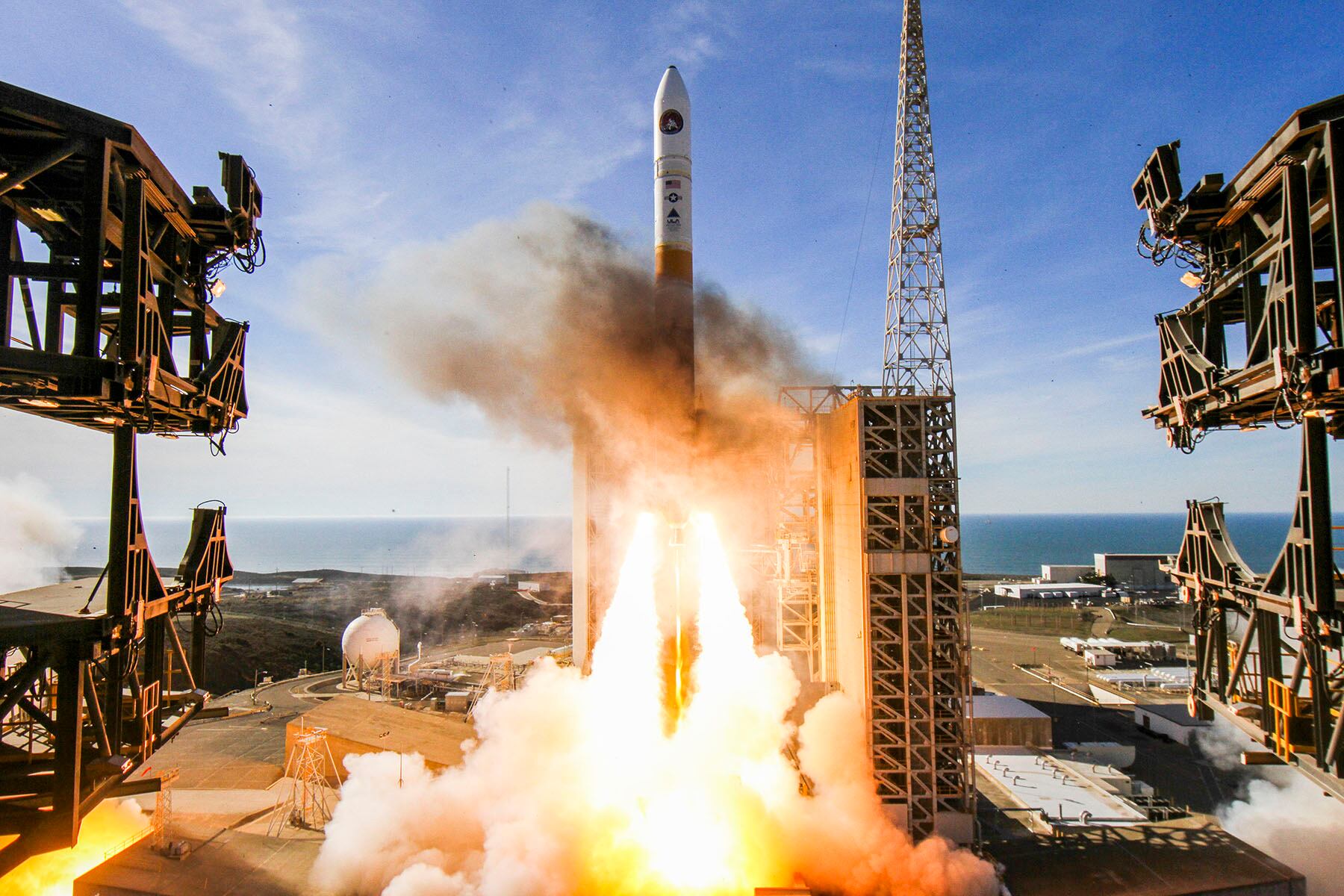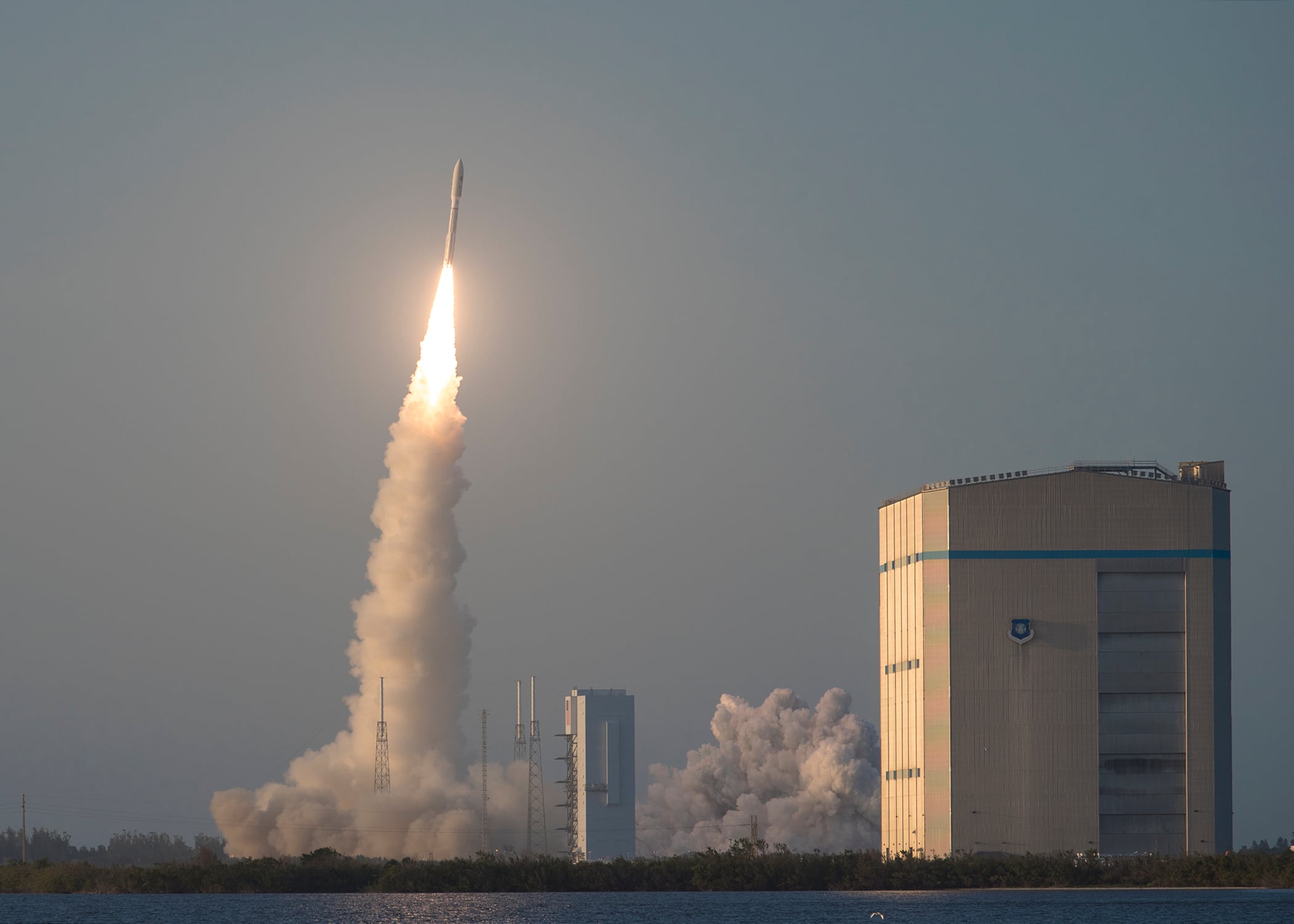WASHINGTON — What will the U.S. Space Force uniform look like? Will it have an official song? And what military personnel and organizations will transition into the new service? Those questions will be answered by a small staff of about 200 people — and yes, the Army and Navy will have a seat at the table.
According to Air Force planning documents obtained by Defense News, an “initial Space Force staff” will be ready to stand up within 90 days of the new branch’s formal establishment by law. The group will take over all planning work currently done by the Air Force, and it will hash out the finer details of the branch’s structure.
While the vast majority of the staff — about 151 people — will come from the Air Force, the other services will also transfer personnel: 24 from the Army, 14 from the Navy and Marine Corps, and nine from the Joint Staff, the Office of the Secretary of Defense and the intelligence community, the documents said.
The initial organizational construct, which was approved by then-Air Force Secretary Heather Wilson in May, resembles a flattened, condensed version of the headquarters structure used by the Joint Staff and military services.
Senior leadership includes an undersecretary of the Air Force for space, a Space Force chief of staff, a vice chief of staff, a senior enlisted adviser and a director of staff. Personnel and logistics functions will be grouped under an S1/4 office. Plans, programs and assessments fall under the S5/8/9 office. The largest office, the S2/3/6/10, will be responsible for intelligence, operations, information dominance and nuclear integration.
RELATED

However, the Space Force’s finalized structure could look much different.
While Air Force leaders did not directly comment on the planning documents, acting Air Force Secretary Matt Donovan confirmed that the service has solidified the initial cadre that will perform the detailed designing of the branch.
“I’m pushing our folks that are coming up with the initial planning for the Space Force to show me a flat, agile, rapid organization,” he said in an exclusive interview with Defense News. “These 200 people will then be given the task of: ‘Now you go flesh it out. Put the meat on the bones of how we’re going to design a Space Force, with not only the staff, but the entire organization.’ How are we going to be organized to provide the best support to the war fighter?”
The Air Force’s planning cell has developed multiple “macro-organizational” design schemes that map out the structure of the Space Force’s headquarters and field units, said Shawn Barnes, the deputy principal assistant to the secretary of the Air Force for space.
Once Congress approves a Space Force, the Air Force secretary and Space Force chief of staff can select the construct that best meets the needs of the new service, and then it will be up to the initial Space Force staff to implement the design, Barnes explained.
Getting past Title 10
But a major issue lingers: Will Congress authorize a Space Force? And if so, how different will it be from the White House’s initial proposal?
Although both the Senate and House Armed Services committees included language in their versions of the fiscal 2020 defense policy bill that would create a new space service, it’s unclear if lawmakers will amend Title 10 — an action the White House sees as pivotal to solidifying it as a fully independent military branch.
RELATED

Over the past several months, department leaders such as Donovan took several trips to Capitol Hill to make the case that the Space Force will not be able to function as a separate service — with its own budget and authorities over its personnel — until Title 10 is changed.
Deputy Defense Secretary David Norquist spoke with staff on the Senate Armed Services Committee on Aug. 26 about the Space Force, hoping to further the argument to change Title 10. A source with knowledge of the discussions told Defense News afterward that staffers seemed open to amending it as long as the language offered protection against the unfettered growth of the new service. But there are still questions about whether the Senate could opt to delay for another year, the source noted.
Without the Space Force formally recognized as a sixth military branch in Title 10, the Office of Management and Budget could forgo giving the service its own budget top line, essentially forcing Air Force and Space Force priorities to continue competing over the same funding, Barnes said.

“Right now, the space budget competes with a thousand other things in the Air Force. That's not a surprise to anybody. It doesn't mean that it doesn't compete well, but it does compete with those things. And the Air Force has lots of pressures to do any number of things,” he said.
Rebecca Grant, a defense analyst with IRIS Independent Research, agrees with the Air Force that the Space Force will need its own budget. However, she said, SASC might be right to make the Air Force wait a year or so before Congress formalizes the Space Force as an independent service.
“What’s the harm of having it take a couple of years? I think the Senate wants to see the progress and the responsibility” before it codifies the service in law, she said. “Maybe they’re satisfied with it this year [and amend Title 10], maybe they want to see a more methodical process [before amending it]. Absolutely nothing wrong with letting this unfold in a methodical way.”
But Barnes argued that there is an urgent need to launch the Space Force. “If ... you agree that there are some issues with things like a space war-fighting culture, and development of doctrine and a need to improve the speed at which we acquire [space systems], then why would we wait another year or two to put those things into place?”
A future branch
While Congress will undoubtedly have a say on the Space Force’s structure, the Air Force has started thinking about which of its organizations could move to the new service.
The Defense Department initially projected that 15,000 service members would transfer to the Space Force in its first five years. But that estimate only includes Air Force personnel, said Air Force spokesman Maj. Will Russell, meaning the number could expand as Army and Navy billets are added.
About half of Air Force Space Command’s 25,000 active-duty and civilian personnel will migrate to the Space Force, Barnes said. Those that provide support functions, like doctors, lawyers, security forces and civil engineers, will remain inside the Air Force.
Beyond Air Force Space Command, the planning documents listed other potential candidate units for transfer to the Space Force, including certain elements from Air Combat Command — like space aggressor and test squadrons as well as a handful of intelligence squadrons — and parts of Air Education and Training Command like the National Security Space Institute.
The Air Force could also transfer some of its own personnel from U.S. Strategic Command, the National Reconnaissance Office, the National Geospatial-Intelligence Agency, North American Aerospace Defense Command and the Missile Defense Agency, the document stated, noting that “analysis/evaluation is ongoing.”
It may be a bigger challenge to figure out which Army and Navy space personnel — who are often cross-trained in different areas of expertise — can permanently cross over to the Space Force without hurting other mission areas, Barnes said.
“We’re going to have to think very carefully about that. It may be that some of those people come over and some of those don’t,” he said. “And I think that that is some of the work that is yet to be determined — is how much of Army space and Navy space will stay in the Army and the Navy.”
Valerie Insinna is Defense News' air warfare reporter. She previously worked the Navy/congressional beats for Defense Daily, which followed almost three years as a staff writer for National Defense Magazine. Prior to that, she worked as an editorial assistant for the Tokyo Shimbun’s Washington bureau.








